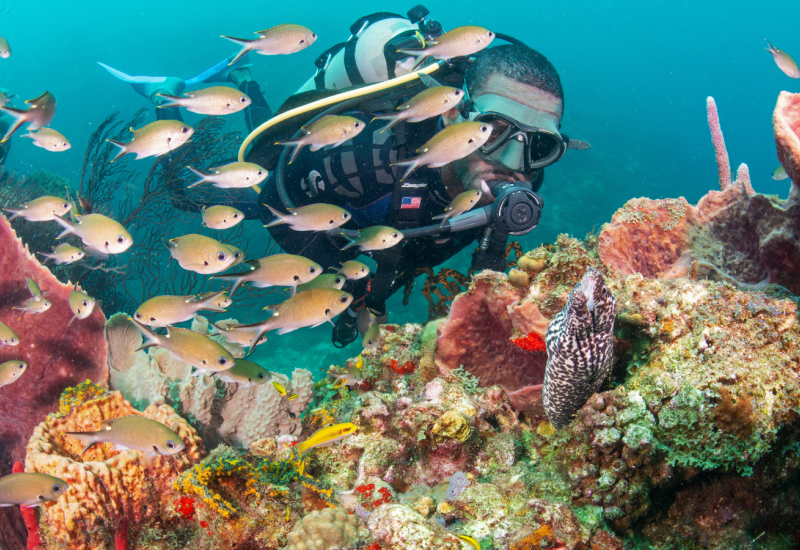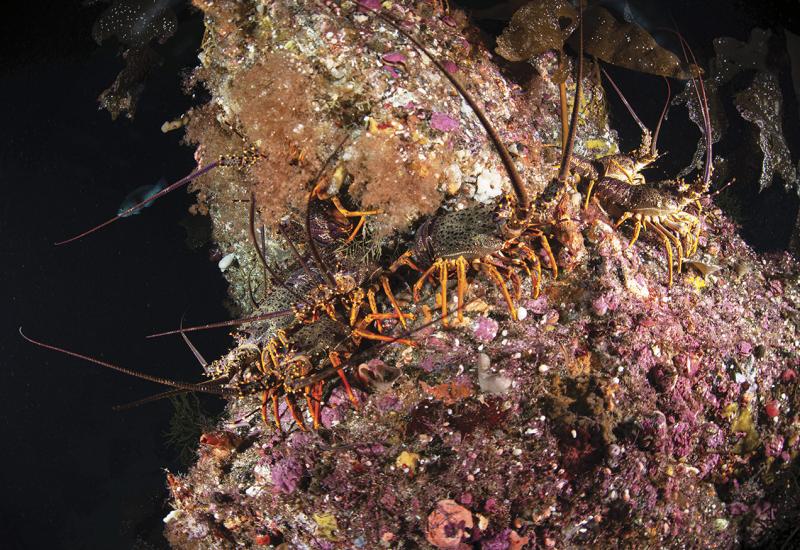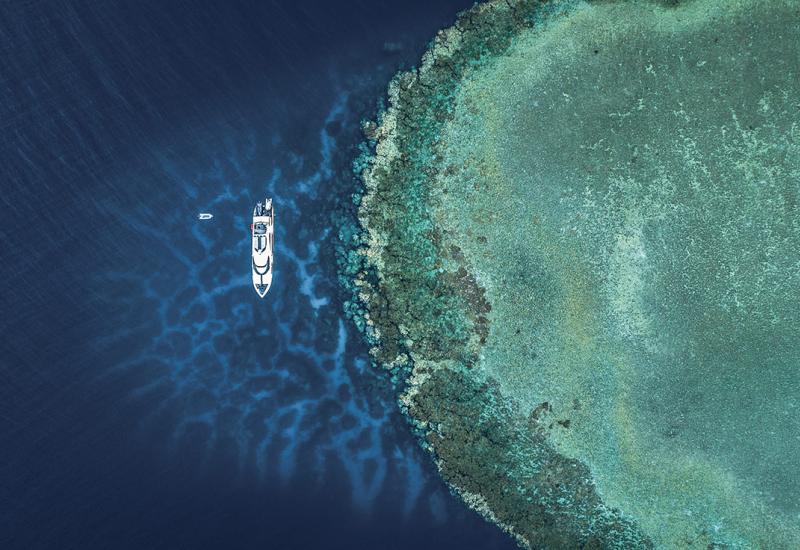ASK DAN: How Do I Treat Injuries from Accidental Contact with Corals?

Courtesy of DANTo prevent coral scrapes, avoid contact with coral.
Cuts and scrapes are among the most common injuries incurred by divers, and DAN receives calls from people who have come in contact with coral at least once a week. Common symptoms of coral scrapes include a burning sensation, pain, itching and a rash.
The surfaces of hard corals are covered with soft living tissues. The rigid, abrasive structures underneath can cause the soft tissues to tear away easily and enter a diver’s scrape or cut. This foreign material can prolong the wound-healing process, causing inflammation or infection, and these injuries can take weeks or even months to heal.
To prevent coral scrapes, avoid contact with coral. Whenever possible, wear a wetsuit or dive skin to protect yourself if you are accidentally pushed into coral by another diver or a current.
FIRST AID FOR CORAL SCRAPES
- Scrub the wound vigorously with soap and water, then flush with copious water.
- Flush the wound with a half-strength solution of hydrogen peroxide and water. Rinse again with water.
- Apply a thin layer of antiseptic ointment, and cover the wound with a dry, sterile and nonadherent dressing. If you have no ointment or dressing, you can leave the wound open.
- Clean and re-dress the wound twice a day.
- If the wound develops a crust, use wet-to-dry dressing changes. Put a dry sterile gauze pad over the wound and soak it with saline or a diluted antiseptic solution (such as 1% to 5% povidone-iodine in disinfected water). Allow it to dry, then rip the bandage off the wound. The dead and dying tissue should adhere to the gauze and lift free. The tissue underneath should be pink and may bleed slightly but should be healing. Change the dressings once or twice a day. Use wet-to-dry dressings for a few days or until they become nonadherent. Then resume the regular wound dressing described above.
- Look for any signs of infection: extreme redness, red streaks, pain, fever, pus or swollen lymph glands. If you observe these signs, consult a physician.
FIRE CORAL
Fire corals are typically yellowish or brownish branching structures, often with white tips. Their appearance can vary depending on the substrate they grow on and environmental factors such as currents. They can colonize hard structures (dead corals and gorgonians, rocks, metal objects, plastic) and sometimes appear stony. Despite their hard structures, fire corals are not true corals. They are hydrozoans, which means these animals are more closely related to the Portuguese man-of-war and other stinging hydroids than to stony corals.
Contact with fire coral causes a burning sensation that may last several hours. There is often a skin rash, which tends to appear minutes to hours after contact. Depending on the individual’s susceptibility and the location of the injury, the skin rash may take several days to resolve. Often, the skin reaction will resolve after a day or two but reappear several days or weeks later. This is normal.
PREVENTION
Avoid touching fire coral formations. If you need to kneel on the bottom, look for clear, sandy areas. Keep in mind that fire corals can colonize hard surfaces such as rocks and old shells, and may not look branchy. Wear a full-length wetsuit, master buoyancy control, and always look down while descending.
FIRE CORAL FIRST AID
- Rinse the affected area with white household vinegar, which tends to stabilize unfired nematocysts (stinging cells). Vinegar will not do anything to injected venom; it will only prevent further envenomation from unfired nematocysts.
- Redness and blisters will likely develop regardless of timely first-aid treatment. Do not puncture these blisters; just let them dry out naturally.
- Keep the area clean and dry—time will likely do the rest.
- For open wounds, seek medical evaluation. Fire coral venom is known to have dermonecrotic (tissue death) effects. Share this information with your physician before any attempts to suture an open wound, as the wound edges might become necrotic.
- Antibiotics and a tetanus booster may be necessary.
While it’s good practice to avoid contact with corals for the corals’ sake, it’s also a great way to avoid cuts, scrapes and stings.
For more information, visit dan.org










